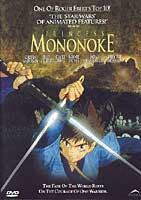|
Now, in a desperate attempt to stumble upon the next big thing, almost all the major studios are pouring cash into 3D computer animation as if the technology alone will revitalize the animation industry. Though the image on screen is very much a part of the appeal, a strong story sustains the life of an animated feature, much to the chagrin of studios cranking out formulaic pieces. That's where Japanese anime might be able to lend a helping hand. But the search for new kinds of animated stories isn't a recent endeavor. Amblin's 1986 release of director and former Disney animator Don Bluth's "An American Tale," though still directed at children, had a dark realism to it, tackling deeper themes through potent, provocative symbols. "Tale's" darkness only echoed Bluth's even more disturbing 1982 release "The Secret of Nimh." Concerned about being left out of the shift toward moodier animated features, Disney produced "The Black Cauldron" in 1985 to a chillingly low box office draw. Disney would once again topple competition with the antithesis of "Cauldron," 1989's peppy, bright, musically spectacular "The Little Mermaid."
Disney, however, has shown a willingness to depart from their standard formula with their recent acquisition of several Miyazaki titles. Disney-owned Miramax tried everything they could to make the historical epic "Princess Mononoke" palatable to a stateside audience. They culled a star-studded cast that included "X-Files'" Gillian Anderson and Academy Award winner Billy Bob Thornton. They signed Neil Gaiman of "Sandman" fame to pen the script adaptation. They filled out the skeletal Japanese sound with the latest digital foley techniques. What they lacked was a marketing strategy that fit a new kind of animation. Studio Ghibli representative Steve Alpert who acted as Miyazaki's surrogate through the Miramax production phase, outlines the ups and downs of the process in a thirteen chapter journal available at http://www.ntv.co.jp/ghibli/Pmo/nissie.html. In it he describes concerns that Miramax had with the film. The most demonstrative marketing overcompensation for the ostensible ignorance of the American audience is a conversation he overheard between Gaiman and a Miramax representative. The executive was concerned about calling Ashitaka a prince even though he lived in squalor among other villagers. Gaiman simply noted, "His father was a king. Some day he will be king. That makes him a prince." The representative apparently still couldn't believe that an audience could accept a prince who does not necessarily come from lavishness. Also, Miyazaki insisted that the script not translate the hand-held cannons in the film as "rifles." But "rifles" nearly made it into the final script. Most obvious about Alpert's experience with Miramax is that its executives were frightened to death of failure and therefore exaggerated the amount of "dumbing down" needed. And never was this perception more clear than when using Miramax's high tech sound layering to, in their words, "sweeten" the film.
"The question of the overall sound had come up before, and had been the cause of several intense exchanges," Alpert explains in his journal. "The Miramax production team clearly felt, and had expressed several times, that the Japanese soundtrack was too 'quiet.' They gave as an example the scenes where the Shishigami, or Deer God, appears. In several places the soundtrack goes completely silent. 'American audiences won't accept that. They'll start throwing things at the screen. They'll yell at the projectionist. They'll start a riot. Younger people will fidget. Squirm in their seats. They'll hate the film.'" These types of adaptation problems are likely to plague the rest of Disney's Miyazaki canon. Miramax has been promising a release of "Laputa: Castle in the Sky," which they've shortened to "Castle in the Sky." Originally meant to come out before "Princess Mononoke," Disney's more daring arm has shelved this project, unsure about its accessibility. The film is rife with inexplicable mysticism, set in a quaint European setting, and filled with inventive mechanical vehicles. Plus its ending is at once conclusive and open. And, once again "Castle in the Sky" also features segments in which Miyazaki crafts silence into a palpable entity on screen. And again, Miramax has packed the English voice cast with stars such as James Van Der Beek and Anna Paquin. Rumors abound that with "Mononoke's" disappointing box office numbers, "Castle in the Sky" might face the same straight-to-video fate as its first Miyazaki acquisition 'Kiki's Delivery Service." Smaller animation companies with limited means have enjoyed relative theatrical success. In 1996, Manga Entertainment braved anime in the feature market with Mamoru Oshii's "Ghost in the Shell." Marketing directly at the fan community, the film only grossed about half a million dollars, but relative to the number of screens, "Ghost" did extremely well. And the title is still serving as an introductory film for anime in the mainstream community. "The popularity of this title is just beginning," says Mike Egan, general manager at Manga Entertainment. "Although it has been out for over three years already, US audiences continue to discover it, especially on DVD. 'Ghost' is now a staple anime title selling over half a million copies in the US with no slowing down. Even Hollywood ('The Matrix') looks to 'Ghost' as a breakthrough sci-fi film." |


